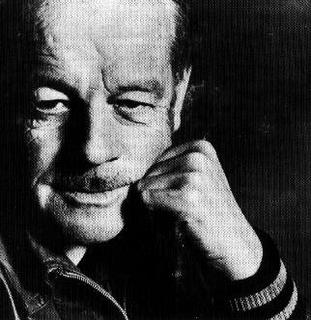
Alistair Stuart MacLean was a Scottish novelist who wrote popular thrillers and adventure stories. Many of his novels have been adapted to film, most notably The Guns of Navarone (1957) and Ice Station Zebra (1963). In the late 1960s, encouraged by film producer Elliott Kastner, MacLean began to write original screenplays, concurrently with an accompanying novel. The most successful was the first of these, the 1968 film Where Eagles Dare, which was also a bestselling novel. MacLean also published two novels under the pseudonym Ian Stuart. His books are estimated to have sold over 150 million copies, making him one of the best-selling fiction authors of all time.

The Chetniks, formally the Chetnik Detachments of the Yugoslav Army, and also the Yugoslav Army in the Homeland and the Ravna Gora Movement, was a Yugoslav royalist and Serbian nationalist movement and guerrilla force in Axis-occupied Yugoslavia. Although it was not a homogeneous movement, it was led by Draža Mihailović. While it was anti-Axis in its long-term goals and engaged in marginal resistance activities for limited periods, it also engaged in tactical or selective collaboration with Axis forces for almost all of the war. The Chetnik movement adopted a policy of collaboration with regard to the Axis, and engaged in cooperation to one degree or another by both establishing a modus vivendi and operating as "legalised" auxiliary forces under Axis control. Over a period of time, and in different parts of the country, the movement was progressively drawn into collaboration agreements: first with the puppet Government of National Salvation in the German-occupied territory of Serbia, then with the Italians in occupied Dalmatia and Montenegro, with some of the Ustaše forces in northern Bosnia, and, after the Italian capitulation in September 1943, with the Germans directly.

Case White, also known as the Fourth Enemy Offensive, was a combined Axis strategic offensive launched against the Yugoslav Partisans throughout occupied Yugoslavia during World War II. It was one of the most significant confrontations of World War II in Yugoslavia. The offensive took place in early 1943, between 20 January and mid-to-late March. The Axis operation prompted the Partisan Supreme Command to enact its plans to drive toward eastern Herzegovina, Sandžak and Montenegro.

The Yugoslav Partisans, or the National Liberation Army, officially the National Liberation Army and Partisan Detachments of Yugoslavia, was the communist-led anti-fascist resistance to the Axis powers in occupied Yugoslavia during World War II. Led by Josip Broz Tito, the Partisans are considered to be Europe's most effective anti-Axis resistance movement during World War II.

Carl Foreman, CBE was an American screenwriter and film producer who wrote the award-winning films The Bridge on the River Kwai and High Noon, among others. He was one of the screenwriters who were blacklisted in Hollywood in the 1950s because of their suspected communist sympathy or membership in the Communist Party.
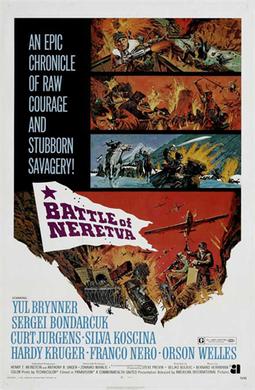
Battle of Neretva is a 1969 Yugoslavian epic partisan film. Written by Stevan Bulajić and Veljko Bulajić, and directed by Veljko Bulajić, it is based on the true events of World War II. The Battle of the Neretva was due to a strategic plan for a combined Axis powers attack in 1943 against the Yugoslav Partisans. The plan was also known as the Fourth Enemy Offensive and occurred in the area of the Neretva river in Bosnia and Herzegovina.
During World War II, resistance movements operated in German-occupied Europe by a variety of means, ranging from non-cooperation to propaganda, hiding crashed pilots and even to outright warfare and the recapturing of towns. In many countries, resistance movements were sometimes also referred to as The Underground.
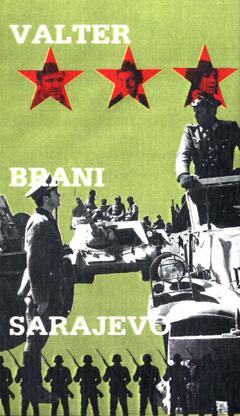
Partisan film is the name for a subgenre of war films made in FPR/SFR Yugoslavia during the 1960s, 1970s and 1980s. In the broadest sense, main characteristics of Partisan films are that they are set in Yugoslavia during World War II and have Yugoslav Partisans as main protagonists, while the antagonists are Axis forces and their collaborators. According to Croatian film historian Ivo Škrabalo, Partisan film is "one of the most authentic genres that emerged from the Yugoslav cinema".

The Guns of Navarone is a 1961 action adventure war film directed by J. Lee Thompson from a screenplay by Carl Foreman, based on Alistair MacLean's 1957 novel of the same name. Foreman also produced the film. The film stars Gregory Peck, David Niven and Anthony Quinn, along with Stanley Baker, Anthony Quayle, Irene Papas, Gia Scala, Richard Harris and James Darren. The book and the film share a plot: the efforts of an Allied commando unit to destroy a seemingly impregnable German fortress that threatens Allied naval ships in the Aegean Sea.

World War II in the Kingdom of Yugoslavia began on 6 April 1941, when the country was invaded and swiftly conquered by Axis forces and partitioned among Germany, Italy, Hungary, Bulgaria and their client regimes. Shortly after Germany attacked the USSR on 22 June 1941, the communist-led republican Yugoslav Partisans, on orders from Moscow, launched a guerrilla liberation war fighting against the Axis forces and their locally established puppet regimes, including the Axis-allied Independent State of Croatia (NDH) and the Government of National Salvation in the German-occupied territory of Serbia. This was dubbed the National Liberation War and Socialist Revolution in post-war Yugoslav communist historiography. Simultaneously, a multi-side civil war was waged between the Yugoslav communist Partisans, the Serbian royalist Chetniks, the Axis-allied Croatian Ustaše and Home Guard, Serbian Volunteer Corps and State Guard, Slovene Home Guard, as well as Nazi-allied Russian Protective Corps troops.

Force 10 from Navarone is a World War II novel by Scottish author Alistair MacLean. It serves as a sequel to MacLean's 1957 The Guns of Navarone, but follows the events of the 1961 film adaptation of the same name. It features various characters from the film who were not in the book, and leaves out some major characters from the book.
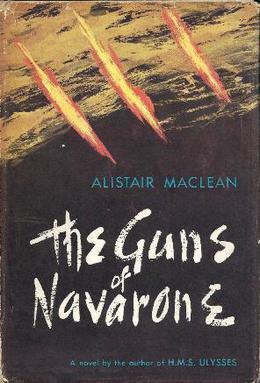
The Guns of Navarone is a 1957 novel about the Second World War by Scottish writer Alistair MacLean that was made into the film The Guns of Navarone in 1961. The story concerns the efforts of an Allied commando team to destroy a seemingly impregnable German fortress that threatens Allied naval ships in the Aegean Sea and prevents over 1,200 isolated British Army soldiers from being rescued.

The Cinema of Yugoslavia refers to the film industry and cinematic output of the former Socialist Federal Republic of Yugoslavia, which existed from 1945 until it disintegrated into several independent nations in the early 1990s. Yugoslavia was a multi-ethnic, socialist state, and its cinema reflected the diversity of its population, as well as the political and cultural shifts that occurred during its existence.

Operation Halyard, known in Serbian as Operation Air Bridge, was an Allied airlift operation behind Axis lines during World War II. In July 1944, the Office of Strategic Services (OSS) drew up plans to send a team to the Chetniks force led by General Draža Mihailović in the German-occupied Territory of the Military Commander in Serbia for the purpose of evacuating Allied airmen shot down over that area. This team, known as the Halyard team, was commanded by Lieutenant George Musulin, along with Master Sergeant Michael Rajacich, and Specialist Arthur Jibilian, the radio operator. The team was detailed to the United States Fifteenth Air Force and designated as the 1st Air Crew Rescue Unit. It was the largest rescue operation of American airmen in history. According to historian Professor Jozo Tomasevich, a report submitted to the OSS showed that 417 Allied airmen who had been downed over occupied Yugoslavia were rescued by Mihailović's Chetniks, and airlifted out by the Fifteenth Air Force. According to Lieutenant Commander Richard M. Kelly (OSS), a grand total of 432 U.S. and 80 Allied personnel were airlifted during the Halyard Mission. According to Robert Donia, allied air operations over Partisan territory in Yugoslavia were strategically significant and extensive in scope. Evaders’ forms show that airmen landed on much of Yugoslavia from eastern Serbia to Slovenia and even on Bulgaria. Evacuees most frequently mentioned airstrips at Tičevo, Sanski Most and on the Croatian coastal island of Vis. Of the 2,364 flyers rescued from Yugoslavia, about 2,000 were extracted from Partisan-controlled territory and 350 from Chetnik-controlled territory.
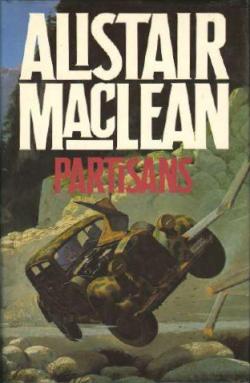
Partisans is a novel by the Scottish author Alistair MacLean, first published in 1982. MacLean used portions of the plot from the 1978 film Force 10 from Navarone as the basis of the plot for this novel. MacLean reverted to the theme of the Second World War, with which he was successful and highly popular in his early career. However, as with many of his later novels, Partisans proved to be less than popular with his long-time fans.
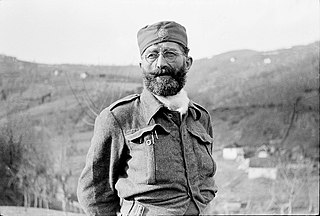
The Ba Congress, also known as the Saint Sava Congress or Great People's Congress, was a meeting of representatives of Draža Mihailović's Chetnik movement held between 25 and 28 January 1944 in the village of Ba in the German-occupied territory of Serbia during World War II. It sought to provide a political alternative to the plans for post-war Yugoslavia set out by the Chetniks' rivals, the communist-led Yugoslav Partisans, and attempted to reverse the decision of the major Allied powers to provide their exclusive support to the Yugoslav Partisans while withdrawing their support of the Chetniks.

Robert Harbold McDowell was an American historian and intelligence officer who worked for the Office of Strategic Services (OSS) during World War II. McDowell, an expert on the Near East, was a professor of Balkan history at the University of Michigan. During World War II he was an OSS desk officer in Cairo and between August and November 1944 a member of an American mission Ranger, to the Chetniks, where he participated in negotiations with Germans to surrender their troops to Chetniks and Americans, and in Operation Halyard, to organize transport of the Allied pilots rescued by Chetniks. In some works he has been described as a man of "violently pro-Chetnik prejudices".

Brigadier Charles Douglas Armstrong was a British Army officer in World War I and World War II. In the latter conflict he was the head of the British Special Operations Executive (SOE) liaison mission to the Chetnik forces of Draža Mihailović in Yugoslavia from July 1943 to early 1944.
The Battle of Višegrad was the battle between Chetnik forces and Axis, and part of an Chetnik offensive in Eastern Bosnia in autumn of 1943, in Axis occupied Yugoslavia during World War II. The Chetnik forces of 2,500 captured Višegrad, destroyed big railway bridge across river Drina and continued their advances toward Rogatica and Sokolac. The German and Ustaše garrison in Višegrad and garrison that protected the bridge of total 1,100 soldiers had 350 dead and 400 wounded. The Chetniks had 21 dead and 30 wounded. In subsequent battle for Rogatica waged ten days later, the Chetniks captured Rogatica and killed more than 200 Axis soldiers.

The Bridge on the Neretva is the memorial bridge on the Neretva river, in Jablanica, Bosnia and Herzegovina. Bridge is part of the Memorial of the Battle on the Neretva dedicated to the famous World War II battle, fought between Yugoslav partisans and Axis forces, as part of the 4th Enemy Offensive in February–March 1943. The battle is also known as the "Battle for the Wounded on the Neretva" or simply the "Battle for the Wounded".

















